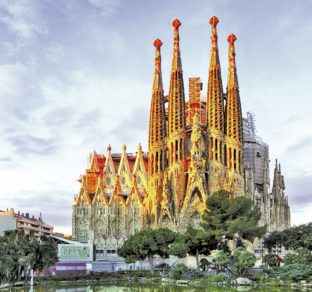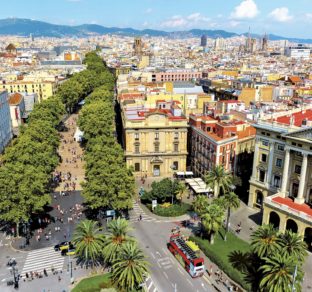Barcelona’s architecture, history, sports
 Barcelona’s largest and most celebrated building, La Sagrada Família, is unfinished but open to tourists. Construction began 137 years ago but was interrupted by the Spanish Civil War and lack of funding. The city hopes to complete the basilica by 2026, the centennial anniversary of the death of Antonin Gaudí, its primary architect.
© Tomas1111 | Dreamstime.com
Barcelona’s largest and most celebrated building, La Sagrada Família, is unfinished but open to tourists. Construction began 137 years ago but was interrupted by the Spanish Civil War and lack of funding. The city hopes to complete the basilica by 2026, the centennial anniversary of the death of Antonin Gaudí, its primary architect.
© Tomas1111 | Dreamstime.com
 Tourists and locals walk, shop and people-watch on La Rambla, Barcelona’s busy pedestrian walkway. The tree-lined esplanade stretches about a mile through the center of the city to its harbor on the Mediterranean Sea.
© Olgacov | Dreamstime.com
Tourists and locals walk, shop and people-watch on La Rambla, Barcelona’s busy pedestrian walkway. The tree-lined esplanade stretches about a mile through the center of the city to its harbor on the Mediterranean Sea.
© Olgacov | Dreamstime.com
By Glenda C. Booth
Posted on March 05, 2020